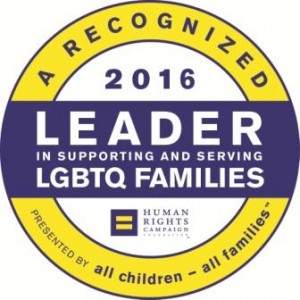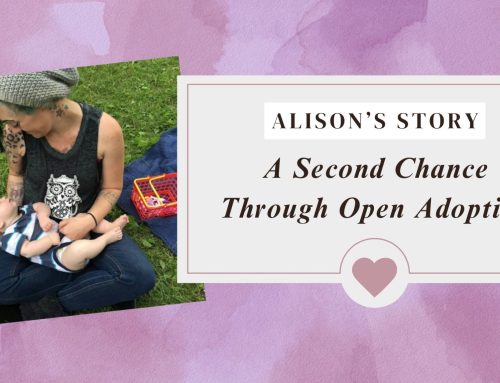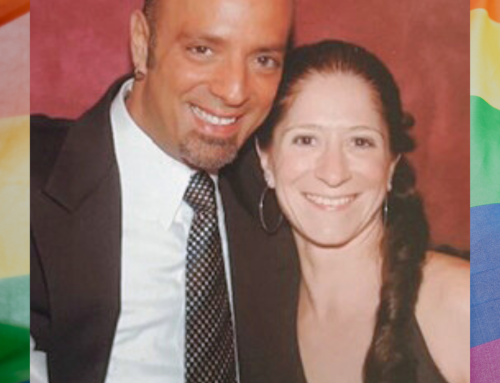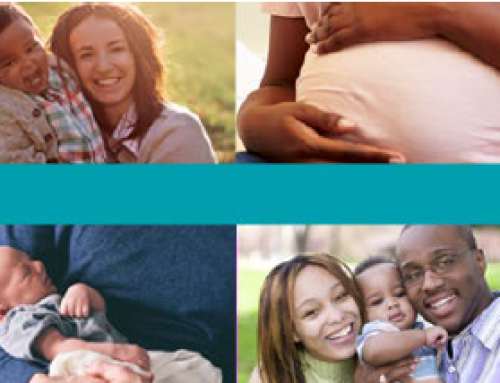Last year, Adoptions From The Heart attended an amazingly informative webinar hosted by the Human Rights Campaign and the All Children All Families initiative and AFTH is a recognized leader in supporting and serving LGBT families. The goal of this campaign in particular is to achieve safety, permanency, and well-being by improving practice with LGBT youth and families. AFTH is proud to be a supporter of the LGBT community and we will be sharing some of the information provided by the Human Rights Campaign Foundation in addition to insight we have gained from being a part of the initiative.

Today we are outlining a glossary of terms that are often heard in the LGBT community. This list was provided to us by HRC.
- Ally: Any non-LGBT person who supports and stands up for the rights of LGBT people. Also: straight/cisgender ally or straight/cisgender supporter.
- Androgynous: The presentation of ambiguous gender, one who presents in such a way.
- Biphobia: Fear of bisexuals, often based on inaccurate stereotypes, including associations with infidelity, promiscuity, and transmission of sexually transmitted diseases.
- Biological Sex: This is determined by our chromosomes (XX for females, XY for males), our hormones (estrogen/progesterone for females, testosterone for males), and our internal and external genitalia (vulva, clitoris, vagina for females; penis and testicles for males).
- Bisexual: An individual who is physically, romantically, emotionally, and/or spiritually attracted to men and women, though not necessarily equally or simultaneously. Bisexuals need not have had equal sexual experience with both men and women; in fact, they need not have had any sexual experience at all to identify as bisexual.
- Butch: Commonly used to refer to masculinity displayed by a female but can also refer to masculinity displayed by a male.
- Cisgender: Refers to people whose gender identity or expression aligns with those typically associated with the sex assigned to them at birth
- Closeted: An adjective used to describe a person who is not open about his or her sexual orientation.
- Coming Out: The process in which a person first acknowledges, accepts, and appreciates his or her sexual orientation or gender identity and begins to self-disclose to others. Coming out is a life-long process—in each new situation a person must decide whether or not to come out. Coming out can be difficult for some because reactions vary from complete acceptance and support to disapproval, rejection, and violence.
- Cultural Competence: The ability to interact effectively with people of different cultures. Culturally competent organizations should have a defined set of values and principles and demonstrate behaviors, attitudes, policies, and structures that enable them to work effectively cross-culturally.
- Femme: Exhibiting stereotypical or exaggerated feminine traits, usually referring to a woman, especially a lesbian. Also: lipstick lesbian
- Gay: The adjective used to describe people whose enduring physical, romantic, emotional, and/or spiritual attractions are to people of the same sex. Often used to describe men who are attracted to other men, but is also used as a term describing both men and women who are attracted to the same sex.
- Gender Expression: Refers to the ways in which people externally communicate their gender identity to others through behavior, clothing, haircut, voice, and emphasizing, deemphasizing, or changing their bodies’ characteristics. Typically, transgender people seek to make their gender expression match their gender identity, rather than their birthassigned sex. Gender expression is not necessarily an indication of sexual orientation or gender identity.
- Gender Identity: Our innermost concept of self along the spectrum of gender. Individuals are conscious of this between the ages of 18 months and 3 years, but our understanding of our gender identity may change during the course of our lives. Most people are cisgender; they develop a gender identity that matches their biological sex.
- Gender Role: This is the set of roles and behaviors assigned to females and males by society. Our culture recognizes two basic gender roles: masculine (having the qualities attributed to males) and feminine (having the qualities attributed to females).
- Gender Fluid: Refers to being unconfined by one single gender identity and able to identify with neither, both and/or other gender(s) (in regards to the masculine/feminine gender binary), at different points in time.
- Genderqueer: A word people use to describe their own nonstandard gender identity, or used by those who do not conform to traditional gender norms.
- Heterosexism: The attitude that heterosexuality is the only valid sexual orientation. Often takes the form of ignoring lesbians, gay men, and bisexuals. For example: a feature on numerous Valentine’s Day couples that omits same-sex couples.
- Heterosexual: The adjective used to describe people whose enduring physical, romantic, emotional, and/or spiritual attractions are to people of the opposite sex. Also: straight
- Homophobia: The fear, hatred of or discomfort with people who love and are sexually attracted to members of the same sex.
- Homosexual: Outdated clinical term considered derogatory and offensive by many gay people. “Gay” and/or “lesbian” are more commonly accepted terms to describe people who are attracted to members of the same sex.
- Internalized Homophobia: Self-identification of societal stereotypes by gay people, causing them to dislike and resent their sexual orientation.
- Intersex: Born with biological aspects of both sexes to varying degrees. So, in actuality, there are more than two sexes. About 1.7% of the population can be defined this way.
- Lesbian: The adjective used to describe women whose enduring physical, romantic, emotional, and/or spiritual attractions are to other women.
- LGBT: An abbreviation for lesbian, gay, bisexual, and transgender. Also: GLBT
- Lifestyle: Inaccurate term that many LGBT people find offensive. Avoid using this term because just as there is no one heterosexual or straight lifestyle, there is no one lesbian, gay, bisexual, or transgender lifestyle.
- Living Openly: A state in which LGBT people are open with others about being LGBT and how & when they choose to be.
- Outing: Exposing someone’s sexual orientation or gender identity as being gay, lesbian, bisexual, or transgender to others when that person is not open about it; in essence, “outing” someone from the closet.
- Queer: A term describing all people who are not heterosexual or who do not conform to rigid notions of gender and sexuality. For many LGBT people this word has a negative connotation; however, many young LGBT people are comfortable using it.
- Questioning: Refers to people who are uncertain as to their sexual orientation or gender identity.
- Same-Gender Loving: A term some people prefer to use instead of “gay” or “lesbian” to express attraction to and love of people of the same gender.
- Sexual Identity: This is how we perceive and what we call ourselves. Such labels include “lesbian,” “gay,” “bisexual,” “bi,” “queer,” “questioning,” “heterosexual,” “straight,” and others. Sexual identity evolves through a developmental process that varies depending on the individual. Our sexual behavior and how we define ourselves (identity) can be chosen, unlike sexual orientation, which is not.
- Sexual Orientation: An enduring physical, romantic, emotional, and/or relational attraction to another person. Categories of sexual orientation include gay & lesbian people—attracted to some members of the same sex/gender; bisexual people, attracted to some members of more than one sex/gender; and heterosexual/straight people, attracted to some members of another sex/gender. Orientation is generally believed to be affected by both genetic and environmental factors. Though the origins of sexual orientation are not completely understood, it is generally believed to be established before the age of five.
- Sexual Preference: A term sometimes used to mean the same thing as “sexual orientation.” Many lesbian, gay, and bisexual people find this term to be offensive because it implies that their sexual orientation is a choice.
- Sexuality: How one experiences and expresses one’s self as a sexual being.
- Transgender: Refers to those whose gender identity and expression at least sometimes runs contrary to what others in the same culture would normally expect. Transgender is a broad term that can include people who identify as transsexuals, crossdressers, transgender men or “trans men,” transgender women or “trans women,” masculine identified females, feminine identified males, male-to-female (MTF) transgender people, female-to-male (FTM) transgender people, people who are intersex, and people who do not identify as either of the two sexes as currently defined. Transgender people can be heterosexual, gay/lesbian, bisexual, or asexual. When referring to transgender people, use the pronoun they have designated as appropriate, or the one that is consistent with their presentation of themselves.
- Transphobia: The fear and hatred of, or discomfort with, people whose gender identity or gender expression does not conform to cultural gender norms.
- Transsexual: A term used to describe people whose gender identity does not conform to their gender assigned at birth and who often seek medical treatment to bring their body and gender identity into alignment.





